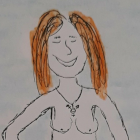Isla del Sol – Sahuiña
On Wednesday, 20 march, while I was still waiting for my bicycle rack, I went to the Isla del Sol. I booked the trip and the accommodation in the office of the Red de Turismo Comunitario del Lago Titicaca, and I hope that this way the communities benefit a bit more. I left Copacabana in the afternoon – at 1:30pm – and the boat trip lasted almost two hours up to Challapampa in the northern part of the Isla del Sol. Señora Santurina (if I remember her name correctly), the woman in charge of the Hostal Puma Punku, where I stayed for the night, was waiting for me at the pier. From the Hostal I had a brilliant view of the lake.

In the afternoon I went to the ruins of Chinkana, also known as “the labyrinth”, because of the structure of the stones. The ruins are about 45 minutes walking distance from Challapampa, walking over a stone path with beautiful views along the way.
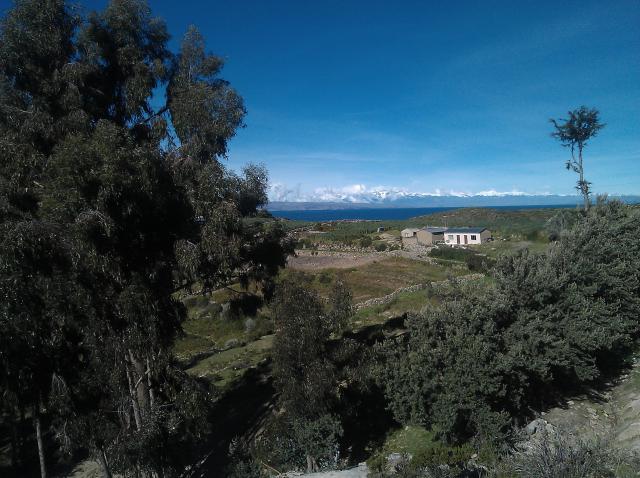
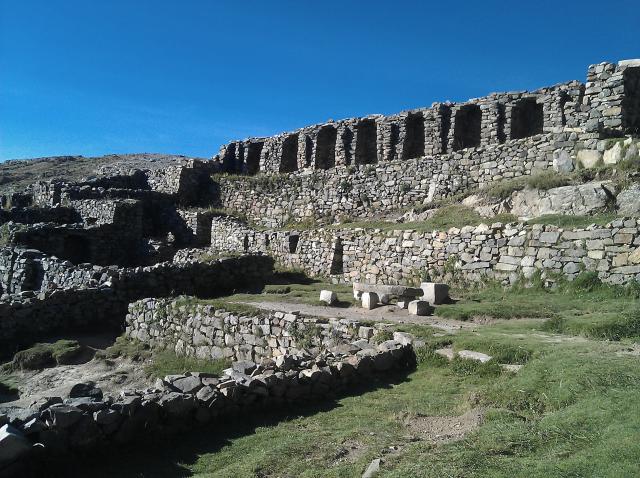

The following day I had breakfast at the Hostal – a service normally not included – and I had it in the small kitchen of Santurina: bread, cheese, and jam, I left early to walk up to the south of the island. Normally the way is via the ruins, but I asked Santurina if there is a more direct way, and so I ascended via the cemetery of Challapampa and went via the mountains, until I met the “main” path near the community of Challa, where I also met another tourist from Brasil.
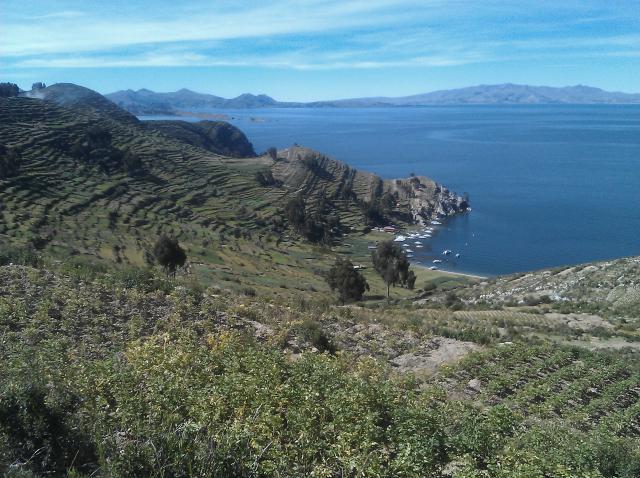
We continued together, until we arrived at the community of Yumani, in the southern part of the island, where we separated again. He took a boat back to Copacabana in the morning, and I decided to spend a few more hours on the island, and to return to Copacabana in the afternoon.
In Yumani I went down to the port of the community, where there are also some restaurants. I had lunch and waited for the boat.
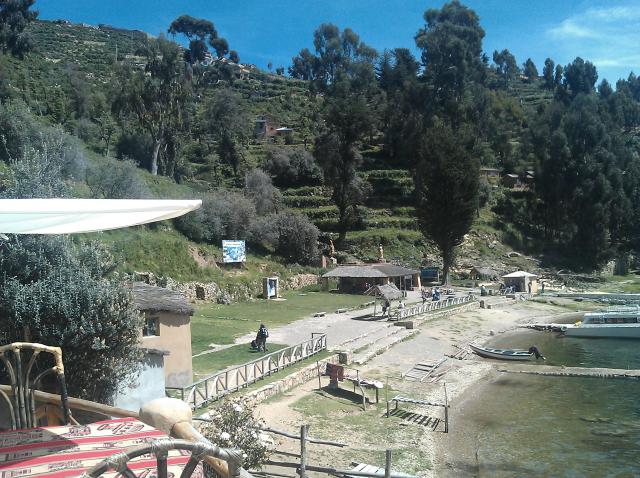
I returned to Copacabana, and as I have written earlier, I received a message from DHL about my bicycle racks.
Today I went by bicycle to the community of Sahuiña, near Copacabana. I again went to the office of the Red de Turismo Comunitario, to book a guide for Sahuiña. I went by bicycle – a ride of more or less 20 minutes – and left my bike in the office of the Red de Turismo Comunitario in Sahuiña. Doña Ana, my guide, explained to me a lot of things about the community, and we walked down to the lake, with Doña Ana all the time explaining me things about the plants they cultivate, the lake, etc.
Today, the community lives from tourism, agriculture, fishing, and also from construction in Copacabana, where some people from the community go to work. Once we got to the lake Doña Ana navigated a rowing boat up to a floating island, with Doña Ana explaining me a lot of things about some of the birds of the lake, and some of the plants.
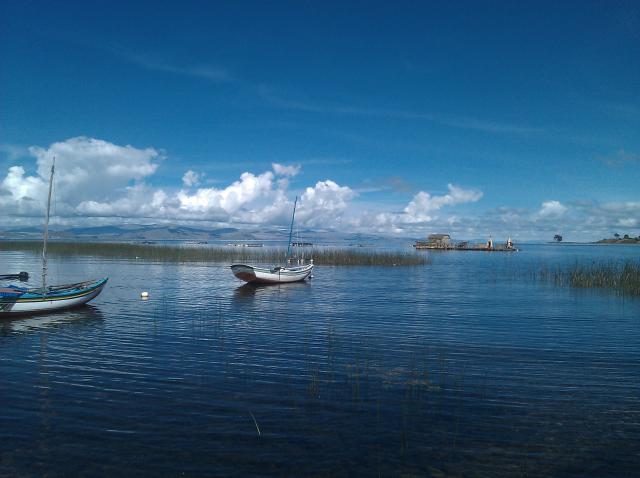
One of the animals of the lake at danger is the giant frog, a frog of up to 30cm (!). We arrived to the floating island (but not of traditional construction), where Doña Ana showed me some giant frogs, and explained me some more about them, and some of the birds of the lake.
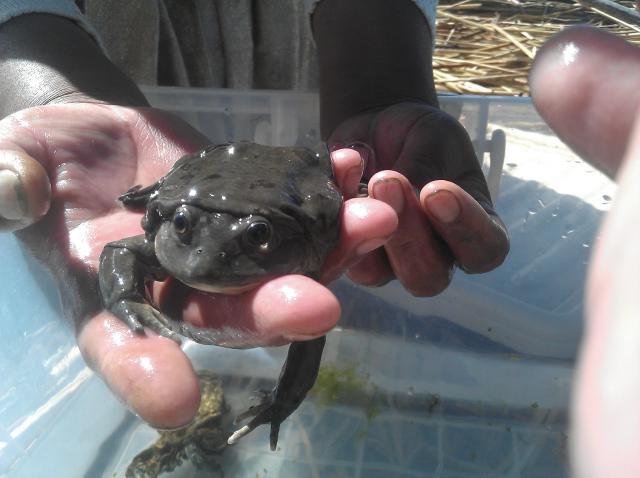
We left the floating island, and Doña Ana also showed me some of the small-scale trout farming in the lake. Later we returned to the community, and Doña Ana showed me many of the medical plants used by the community – I don't remember much, but she has a broad knowledge about many things. After more or less two hours I left again, with a bit more of an idea about the life and tradition of an Aymara community on Lake Titicaca. Thank You, Doña Ana.
- Alana Queer's blog
- Log in to post comments
 Español
Español
